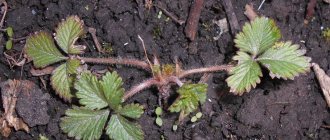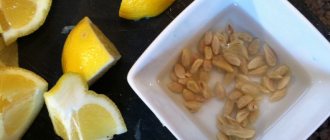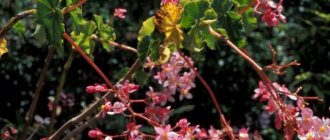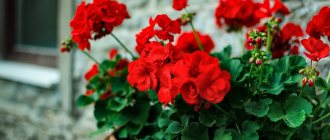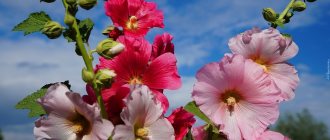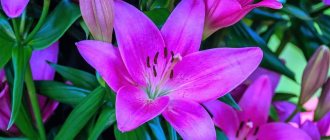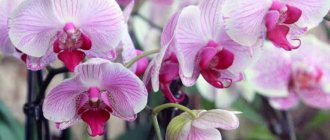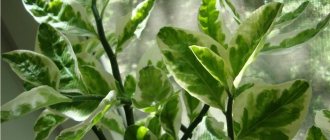Delicate, exquisite godetias are not often found in amateur gardening. The reason is that this plant looks very much like a capricious azalea, but unlike the latter, it does not require care. In regions with a mild southern climate, godetia is planted directly in the flowerbed. In other places, it is preferable to do this through seedlings, transplanting grown seedlings into open ground when the threat of return frosts has passed.
- 2 Planting dates
2.1 Sowing seeds depending on the region - 2.2 Sowing according to the lunar calendar: table of favorable dates
Description
Godetia grows as a bush. It may have a pyramidal or spreading shape. Godetia reaches a height of 60 cm and has grassy shoots in early summer. Over time they become woody.
The leaves on the shoots are arranged alternately. They are narrow and elongated. The flowers of this plant can be monochromatic or multi-colored. Their shade depends on the variety of godetia. The flower can be white, pink, burgundy, peach or scarlet.
Godetia flowers have the shape of a bell or rose (double). They are collected in inflorescences in the form of a brush. This plant blooms from July until late autumn (around the end of October). Each of its flowers remains open in any weather.
When frost occurs, cylindrical boxes with seeds appear on godetia. You can get a new plant from seeds if planted within 3-4 years after collection. They cannot be stored longer, because the godetia seeds will lose their viability.
Features of reproduction
Godetia is an annual plant, therefore it reproduces in only one way - by seeds. It is not necessary to buy them every time, since seed material can be prepared independently. Subject to certain conditions, its germination persists for 3-4 years.
Only ripened seeds need to be collected. To do this, you need to wait about a month after flowering. When the boxes begin to darken, you should carefully cut them off and dry them. After this, you can shake out the seeds.
Attention! To preserve the germination of godetia seeds, they must be stored in a dark and cool place. High humidity is destructive.
Types and varieties of godetia
Scientists have identified twenty species of godetia. Each of them includes different varieties. But in our country, large-flowered, double and lovely godetia are especially popular, since these species tolerate the Russian climate well.
Godetia grandiflora
Godetia grandiflora is a relatively low plant. The length of its shoots does not exceed 40 cm. The bush has leaves tapering towards the base and large bell-shaped flowers (up to 100 mm in diameter).
The flowers are collected in a raceme at the tip of the stems. Their shade can be white, pink, lilac, red, scarlet, crimson or dark red. The following varieties belong to this type:
- Orange Room is a godetia up to 50 cm high with a semi-spreading bush shape. The green-red hue of the stem and narrow leaves are one of the characteristics of this variety. Flowers reach a diameter of up to 50 mm and have the shape of a wide bell. They are red-orange with a smooth edge of the petals.
- Weisser Schwann is a compact godetia no more than 35 cm high. It has light brown shoots below and green above. The flowers of the plant are satiny white, cup-shaped. They have petals with smooth edges and reach a diameter of 60 mm.
- Summer's Darling is a godetia with pink and burgundy flowers.
- Sybil Sherwood are small, creeping bushes up to 40 cm high. They delight the eye with bright pink inflorescences.
- Memoria is a white flowered variety. If you look closely, you can see a slight shade of pink.
- Rembrandt - godetia with pink flowers covered with red spots.
- Meteor is a variety with dark scarlet bell-shaped flowers. The petals of the bells have a velvety surface.
- Maiden Blush is a plant with creamy white flowers. This shade fades to hot pink at the base of the cup.
- Orange Glory - godetia with soft pink inflorescences.
- Satin Rose is a variety with pink-cream flowers. Satin Rose's petals are wavy at the edges.
Godetia amoena
The lovely godetia grows up to 60 cm in height. It has erect stems with a smooth surface.
Over time, the shoots partially become woody. This plant has narrow, pointed leaves and cup-shaped flowers up to 50 mm in diameter. The flower petals are colored raspberry-lilac or red-pink (there are other shades of red).
This type includes the following varieties:
- Kirshkenigin - godetia with pink-red flowers.
- Crystal Snowflake is a tall bush variety. Their height reaches 75 cm. This godetia has white flowers.
- GraceRosePink is also a tall variety. It has bright crimson inflorescences.
- Satin is a compact representative of the species with pink bell-shaped flowers. Their petals become darker as they approach the middle.
- Scarlet Red is a variety of godetia with pink-red inflorescences. Scarlet Red's petals are lighter near the center.
Godetia terry
Terry godetia, as a separate species, does not exist in nature. Lush flowers are found in all other species. The variety Rembrandt from the large-flowered category and Sybil Sherwood also have double inflorescences. Other popular varieties:
- Diamond. It is characterized by bright red inflorescences with white spots.
- The bride is a godetia with white flowers. If you look closely, you can notice a soft pink tint.
Growing godetia from seeds
Godetia is a very unpretentious representative of the flora. It can be grown from seeds directly in open ground. This method is better than preparing seedlings. By replanting ready-made seedlings, you will damage many of them. Godetia, in such cases, is not accepted after planting.
Sowing seeds
Regardless of the variety, seeds should be sown in the second half of April. In warm regions, planting for the winter is allowed. Both in autumn and in spring it is necessary to pre-disinfect the seeds. This can be done with a weak solution of potassium permanganate. Soak the planting material in it and leave for half an hour. This will help protect the seedlings from diseases after germination.
Godetia is planted at shallow depths. A depth of 5 mm is sufficient for seeds. But the distance between the holes should be at least 25 cm. If the soil has not yet warmed up in April, water it generously with warm water. After sowing the seeds, water again with heated water and cover the soil with film.
Raise the film daily for ventilation. Godetia may produce too dense shoots. In this case, it will need to be thinned out.
Seedling
In cold regions, planting Godetia in seedlings is recommended. This way you can achieve flowering earlier. For this purpose, containers with nutritious soil are prepared. They must have a good drainage layer. The seeds are planted in containers and covered with film. They should germinate in 1.5 weeks.
After the sprouts appear, the film can be removed.
Godetia is ready to dive if it already has two leaves. The sprouts are picked and planted in different pots. After this, you need to wait 2 weeks and start fertilizing the seedlings. It can be planted in a flowerbed when the sprouts reach a height of 60 mm.
What to do if seedlings stretch out
Pulling of seedlings is likely in case of too dense sowing or lack of sunlight. There are several ways to solve this problem:
- diving into separate containers;
- adding artificial lighting;
- reducing watering to a minimum.
A few days after picking, it is recommended to fertilize with a weakly concentrated complex fertilizer.
Planting in open ground
Godetia is planted in a flowerbed when the sprouts do not yet have flower stalks. If they appear, the flower cannot be replanted. The sprouts are removed from the pots along with the soil. This must be done very carefully.
If the roots are exposed, the godetia will die. The seedlings should be placed at intervals of 25 cm. It is better to add white clay to the holes. It stimulates the growth of godetia.
When choosing a day for landing, make sure that the weather is cloudy. The hot sun can harm fragile shoots. If the day is sunny, start planting only after sunset.
Spring planting of seedlings
Young shoots are planted in the flowerbed at the end of May. In this case, godetia will bloom by the beginning of July. Before the final transfer to the street, it is necessary to harden off the fragile shoots. To do this, pots begin to be taken out of the house every day from the beginning of May. First, they are left in the open air for 2 hours and the interval is gradually increased.
Landing before winter
Planting godetia for the winter is possible only in warm regions and provided that the cultivation will take place from seeds. Using seedlings in late autumn is undesirable, since most of the sprouts will die after falling into open ground.
There are no such problems with seeds. They gain resistance to cold and disease. When Godetia seeds fall into the soil in the fall, they do not have time to sprout, but are well saturated with moisture. As a result, the flower blooms much earlier than when planted in the spring.
Growth conditions
Godetias are unpretentious plants. They easily take root in open ground and are frost-resistant. They like sunny areas with some shade during the day. For growing, it is better to choose flower beds located in the southern part of the site.
According to breeders, godetia will get along with most types of garden flowers (especially irises). However, you should not plant several types of godetia in one flower bed: strong shoots will “strangle” the weaker ones. It is better to get by with a variety with flowers of different shades.
Location, soil
Godetia loves well-lit places. In shaded areas, any variety will bloom with small flowers. Sufficient light is not the only requirement for growing this plant. You need to choose a place with loamy soil. It can be slightly acidic or neutral.
Having chosen a suitable area, prepare it for planting godetia. For both seeds and seedlings, you need to dig up the soil well, water it and add mineral fertilizers and wood ash. In addition, you need to fertilize the soil with humus at the rate of 5 kg of humus per 1 square meter. m plot. You can plant seeds or sprouts in the prepared soil.
History of selection
Godetia is a representative of the Fireweed family. North America, namely Southern California, is considered the birthplace of the culture. When this flower was brought to Europe, no one knows for sure. But for the first time, its structure was described and classified by the Swiss botanist C. Godet, after whom it was named.
Subsequent breeding work made it possible to obtain hybrid forms of the plant, which were distinguished by long and lush flowering, as well as increased resistance to adverse weather conditions. Godetia Beauty became one of these species.
Caring for godetia in open ground
Godetia does not belong to the category of finicky representatives of the flora. But this plant also requires care so that it delights you with colorful flowers all summer. First of all, you must ensure proper watering, weeding and fertilizing.
Watering
Godetia is very sensitive to both excess and lack of water. It should be watered moderately, without over-watering or over-drying. The best solution for this is a drip irrigation system. But if you don’t have one, you can do the task manually. The main thing is to pre-expose the water to the sun so that it warms up.
Spraying the leaves is very useful for godetia. This procedure helps protect the leaves from drying out. But they should be sprayed only after sunset. Otherwise, burns will appear on the leaves.
Top dressing
In order for godetia to bloom profusely, it needs to be fed 2 times a month. At first, this can be done with any complex fertilizers. After the buds appear, use mineral fertilizers with potassium and phosphorus. They promote active flowering. Never buy nitrogen-based products.
This chemical stimulates the growth of foliage, not flowers.
Weeding
You need to weed the bushes regularly to get rid of weeds and improve soil ventilation.
Loosened soil will dry out well even after heavy watering. This will allow you to protect the godetia roots from rotting.
Formation
Godetia is a bush with tender shoots that are not recommended to be pruned. You can achieve abundant flowering in another way - by removing wilted flowers and dried leaves. The flowers of this plant bloom for 3 days. Then they need to be removed to make room for new buds.
Tall varieties of godetia need support. They must be tied to pegs, otherwise the tender shoots will break under the weight of large inflorescences.
After flowering
In place of the flowers, this plant produces boxes with seeds. They ripen a month after the godetia fades. The boxes can be cut off only after they have darkened. After cutting the fruits, scatter the seeds out of them, dry them and store until the next season.
Damage by diseases and pests
Godetia, like other plants, can suffer from harmful microorganisms and parasites. Its most common diseases:
- Root rot caused by a fungus. This disease occurs due to excessive watering. Its symptoms: lethargy of the leaves, the appearance of brown spots on them, drying out, blackening of the roots. There are no remedies to treat rot. You can only remove the affected bushes from the flowerbed so that the infection does not spread to neighboring seedlings. The diseased godetia should be burned, after which you will need to disinfect the tools and treat the soil with copper sulfate.
- Powdery mildew. This disease manifests itself as a white coating on the leaves. In this case, godetia is treated with a fungicide.
- Downy mildew. A sign of the disease is small spots on the leaves. The disease is also treated with a fungicide. To avoid the appearance of downy mildew, you need to plant the bushes away from melons.
- Rust. The disease got its name because of the red spots. For treatment you will need 1% Bordeaux mixture.
- Aphids eating leaves. Insecticides work well in the fight against aphids. But you can also use folk remedies: soap solution, as well as infusions of tobacco or wood ash.
Godetia transforms gardens, parks and balconies. If you care for her properly, she will give you joy until late autumn.
